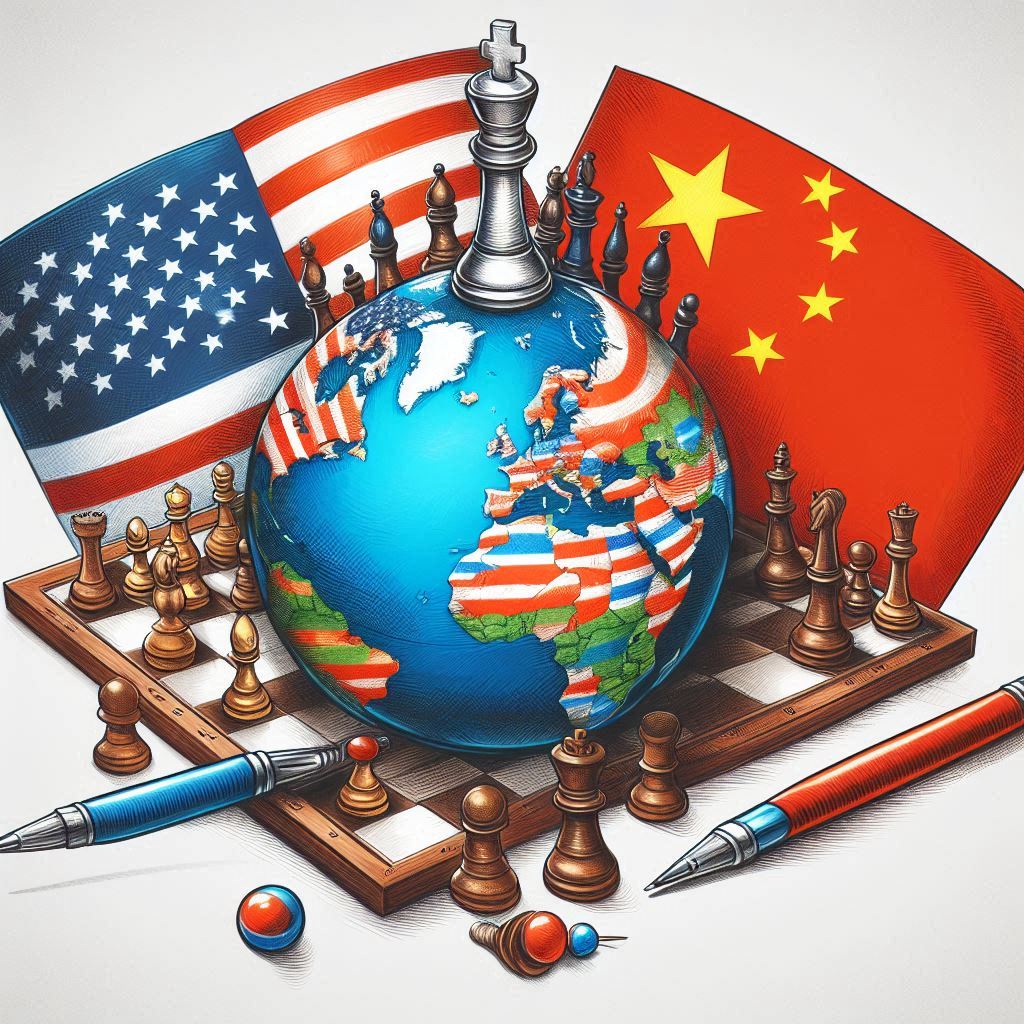
Category: East Asia

China pumps up narrative of happy Uyghurs in Xinjiang among Pakistanis
“Chinese Rahat Abdullah” has become a regular on Pakistani social media channels, YouTube and Facebook, wearing Atlas silk dresses, Pakistani clothing, or traditional Chinese outfits. Regarded as a Chinese internet star, she also sings in Urdu on local radio and cooks Uyghur dishes on Pakistani TV programs – though she refers to the dishes as Chinese food. Her sudden rise in popularity has raised questions among Uyghurs living in Pakistan about Beijing’s efforts to use local Uyghurs as pro-Chinese Communist Party propaganda tools to downplay the Chinese government’s horrific treatment of Uyghur Muslims in Xinjiang. China has come under harsh international criticism for its severe rights abuses against the predominantly Muslim Uyghurs, including forced labor. The U.S. government and several Western parliaments have declared that the abuses amount to genocide or crimes against humanity. Abdullah is believed to hail from the city of Ghulja – or Yining in Chinese – in Xinjiang. Information on Pakistani social media platforms says she earned a law degree in China and arrived in Pakistan in 2010. She has been known to teach Chinese at various universities in Pakistan and is portrayed in the videos as a messenger of friendship between China and the predominantly Muslim Pakistan. But Abdullah doesn’t mix with local Uyghurs, according to Omar Uyghur, the founder of a trust that provides assistance to Uyghur refugees in Pakistan. “She doesn’t come to the weddings or funerals,” he said. “Uyghurs don’t meet with her either. She spreads propaganda in the Pakistani media on how Uyghurs are living happily.” At a time when Uyghurs in Pakistan cannot freely return to Xinjiang and some Uyghur women married to Pakistanis are being detained by Chinese authorities in the region, Abdullah was able to visit Ghulja last June. During her visit, she participated in a wedding and recorded Uyghur songs and dances there, later posting them on Facebook and other social media platforms to give her Pakistani followers the impression that Uyghurs live happy lives. In June 2023, Rahat Abdullah visited Ghulja in northwestern China’s Xinjiang region, where she recorded Uyghur songs and dances to give her Pakistani followers the impression that Uyghurs live happy lives. Credit: Screenshot from Rahat Abdullah Facebook Television host and actress Until recently, Abdullah had about 10 social media followers, but her follower count has climbed to more than 40,000, largely due to her appearances on Pakistani TV. She recently became a host of the “Ni Hao” program – Mandarin for “Hello” – on Pakistan’s Kay2 TV, a channel that has received investment from China. She also has portrayed a Pakistani woman married to a Chinese man in a TV series that highlights the friendship between China and Pakistan. On June 4, Abdullah sang a Pakistani folk song on an Eid al-Adha TV program in Islamabad while wearing a traditional Uyghur Atlas dress and introducing herself as “Chinese Rahat Abdullah.” Photos on her social media accounts indicate that she has had connections with the Chinese Embassy in Pakistan and other Chinese organizations there since 2017. Abdullah, who is relatively unfamiliar to Uyghurs but is gaining popularity through local broadcasts in Pakistan, did not respond to Radio Free Asia’s requests for comment via messages sent to her social media accounts. Other efforts with Pakistanis Abdullah’s new notoriety comes as China and Pakistan have strengthened ties across various sectors in recent years, and as Beijing has invited some influential Pakistanis on trips to Xinjiang. On July 18, Ma Xingrui, Communist Party Secretary of the Xinjiang Uyghur Autonomous Region, and Xinjiang government chairman Erkin Tuniyaz welcomed a delegation of Pakistani scholars in Urumqi, Xinjiang’s capital. During the meeting, Ma told his guests that they have created a free and happy living environment for the people of Xinjiang. He also criticized Western countries that have followed the lead of the United States in condemning China for human rights violations. Alleged atrocities against the Uyghurs have included detention in “re-education” camps and prisons, torture, sexual assaults and forced labor. Qibla Ayaz, chairman of Pakistan’s Council of Islamic Ideology and leader of the visiting delegation, affirmed the participants’ unwavering support for China and expressed admiration for the progress in Xinjiang’s development and the peaceful lives of its Muslim population. The participants also expressed hopes for creating closer connections with Xinjiang through the Pakistan-China Economic Corridor, a 3,000-kilometer Chinese infrastructure network project under the Belt and Road Initiative to secure and reduce travel time for China’s Middle East energy imports. Pakistani student Muhammad Usman Asad holds the flag of East Turkestan, Uyghurs’ preferred name for Xinjiang, in front of a billboard announcing a Dragon Boat Festival event at the National University of Sciences & Technology in Islamabad, Pakistan, June 10, 2022. Credit: Mumahhad Usman Asad An ineffective measure Some Pakistanis have expressed growing concern that their government has remained silent about the abuses in Xinjiang. Pakistani scholar Muhammad Usman Asad, who has spoken out on behalf of Uyghurs in Xinjiang, said when China invites Pakistani religious scholars to tour Xinjiang, news about their visits always appears on Chinese social media, but not in the Pakistani media. “These so-called religious scholars are not the kind of scholars that the Muslim masses in Pakistan would listen to,” said Asad, who staged a solitary sit-in in Islamabad in June 2022 to protest China’s repressive policies against Uyghurs. “They are only pro-government and government-sponsored Islamist organizations, so their false propaganda about China will have little effect.” Nonetheless, China is extending its attempts to sanitize its image, Asad said, following heavy criticism from Western nations about the government’s brutal treatment of Uyghurs and other Turkic minorities in Xinjiang. “Just as China’s campaign to improve its image through the religious sphere has been ineffective, its campaign in Pakistan through English-speaking Chinese or Pakistani internet stars has been equally ineffective,” he said. Translated by RFA Uyghur. Edited by Roseanne Gerin and Matthew Reed.
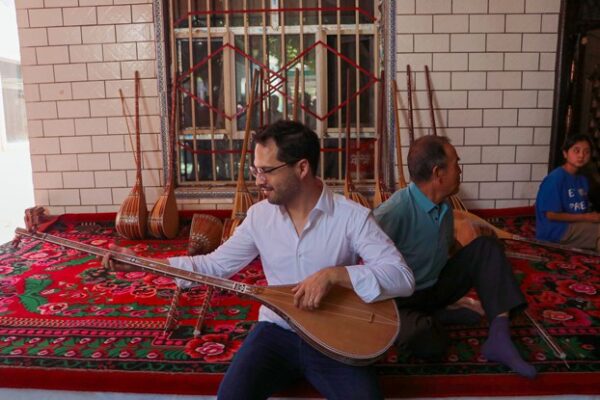
Foreign diplomats in China treated to tour of Xinjiang and ‘happy’ Uyghurs
A Chinese government-sponsored visit to Xinjiang by 25 Beijing-based ambassadors and other diplomats from developing countries has come under fire by human rights activists for pushing an official narrative that the mostly Muslim Uyghurs in the far-western region are thriving, despite the reality of severe repression. The delegation, which included diplomats from Dominica, Myanmar, Iran, Kyrgyzstan, Uzbekistan, Pakistan, Nicaragua and Mexico, visited the western autonomous region from July 31 to Aug. 3. Xinhua news agency and CGTN, China’s state-run international TV broadcaster, covered the diplomats as they visited Xinjiang’s capital Urumqi, the cities of Aksu and Kashgar, and other significant locales to observe the region’s “economic and social progress” and affirm that “the local population in Xinjiang is living a happy life.” And the Chinese government’s efforts appear to have paid off. “During our time in Xinjiang, we had open conversations with the local people and observed that they lead content and happy lives,” Martin Charles, the ambassador to China from the small Caribbean island nation of Dominica, told Xinhua. “We didn’t come across any instances of forced labor, and there were no indications of human rights violations,” he said. China is relying on government-organized visits for foreign officials and influential people from various professions to promote an alternative vision of Uyghur life in Xinjiang amid growing condemnation by Western nations over its maltreatment of Uyghurs and other Turkic minorities. The U.S. government and several Western parliaments have declared that the ongoing human rights abuses, including arbitrary detentions, torture, forced sterilizations of Uyghur women, and forced labor, amount to genocide and crimes against humanity. China has also denounced a report issued nearly a year ago by the U.N. high commissioner for human rights that documented cases of severe rights abuses in Xinjiang. The report said that the abuses could constitute international crimes, in particular crimes against humanity. Though the groups invited to tour the region are diverse, they have one thing in common: They all support China’s “Xinjiang policy.” ‘Telling the story of Xinjiang well’ In early February, another visiting delegation of Beijing-based ambassadors and diplomats from African countries, including Senegal, Benin, Mali, Rwanda, Madagascar, Malawi, Uganda, Lesotho and Chad, visited Xinjiang and expressed support for China’s policies there. All the countries maintain strong economic ties with China because many have benefited from Chinese-built and financed infrastructure projects under the Belt and Road Initiative. They also support China within the United Nations. Members of the delegation of diplomats who visited in July also expressed their rejection of a previous proposal by the U.N.’s top human rights body to hold debate on alleged rights abuses against Uyghurs and other ethnic minorities in Xinjiang. The proposal by mostly Western nations, including the United States, was voted down in October 2022. Six days before the diplomats visited Xinjiang, the Chinese government organized a seminar in Urumqi to convey its narrative of the region. During discussions about “telling the story of Xinjiang well,” participants emphasized reaching overseas audiences by transmitting the narrative in languages other than Mandarin Chinese. Hector Dorbecker, counselor for economic-commercial and financial affairs at the Embassy of Mexico in Beijing, tries to play dutar, a long-necked two-stringed lute, in Jiayi village of Xinhe county, northwest China’s Xinjiang Uygur Autonomous Region, Aug. 2, 2023. Credit: Zhao Chenjie/Xinhua via Getty Images In late December 2018, a delegation of diplomats from Kazakhstan, Russia, Kyrgyzstan, Malaysia, and 12 other countries, all stationed in Beijing, visited Xinjiang on an agenda organized by the Chinese government, which presented “re-education” camps as voluntary vocational training centers. The Chinese government has also sponsored foreign journalists on trips to Xinjiang. Chinese officials arranged for a group of journalists from 10 foreign media outlets to tour major cities in Xinjiang in April 2021 to defend its policies in the region and dispel reports of human rights abuses. In August 2019, Chinese Communist Party officials hosted another group of foreign journalists, most of whom worked for state broadcasters from countries along the Silk Road economic belt, putting them up in fancy hotels while they toured Xinjiang and lecturing them on China’s measures to stop terrorism and separatism in the region. The officials took the journalists to some mosques still left standing though authorities had closed, demolished, or turned into museums many others in Xinjiang, to a “re-education” camp they said was a vocational training center, and to shows where young Uyghurs danced and sang. rights activists weigh in Henryk Szadziewski, director of research at the Uyghur Human Rights Project, said the arranged visits are “a consistent tactic employed by the Chinese government to conceal their wrongdoings” during which they use others to amplify their messages. “Whether it is a western vlogger doing a travel blog or diplomats from countries that are friendly, or that rely on China in terms of its economy, or [face] threats or pressure, they put out this message that Xinjiang is now safe and prosperous as a region,” he said. While China invites people from nations sympathetic to its perspective to visit Xinjiang, it has rejected requests by the U.S. and human rights groups that independent investigators be able to visit the region. Sophie Richardson, China director at Human Rights Watch, said all visits to Xinjiang by foreign diplomats were designed by China to cover up rights abuses. “If everything is fine, why not let in independent international investigators, particularly given the mountain of evidence of some of the most serious crimes under international law?” she asked. “So, it’s not clear why some people got to go and others don’t unless Beijing has something to hide,” she said. Sayragul Sauytbay, an ethnic Kazakh who testified about the abuse she witnessed while detained in a “re-education” camp in Xinjiang, cautioned visiting diplomats against ignoring China’s rights abuses in the region and becoming accomplices to them. “They know and can see China is lying, but they are turning a blind eye,” she said. “These are the countries that rely on China, but for them, this is a rare opportunity….
Myanmar junta troops and police try to evict villagers near Chinese copper project
Junta troops and police have told the residents of a village near a Chinese-run copper project in Myanmar’s Sagaing region they will be forcibly evicted if they don’t leave, locals told RFA on Wednesday. China’s state-owned Wanbao Company runs the Letpadaung Copper Project in Salingyi township in a joint venture with a company owned by Myanmar’s military. It fenced off Wet Hmay village on August 6, on the pretext that the village is in the mine’s project area, and told all 35 households to move out of the village permanently. On Tuesday, Wanbao officials summoned six villagers and told them to inform all residents that they needed to leave as soon as possible, according to a local who did not want to be named for security reasons. “They [village representatives] said that Wanbao asked them to clear out the village, asking villagers to respond to [the company] the following day,” he said, adding that company officials told the representatives if they didn’t get an immediate response they would take no responsibility for the actions of the troops and police. The village representatives told the company they would inform Wet Hmay residents and discuss their plans. Residents said junta troops have already occupied many parts of Wet Hmay and have been threatening locals and telling them to leave. Wanbao has repeatedly attempted to enclose the village with a fence, but villagers have objected, delaying the project. Locals claim that this time is different because soldiers and police have been dispatched to clear out the village and fence it off. RFA contacted the junta spokesperson for Sagaing region, Saw Naing, seeking comment on the forced evictions, but he did not answer the phone. RFA also called Wanbao but nobody answered. Workers for China’s Wanbao Company fence of Moe Gyoe Pyin village, Letpadaung Taung, Sagaing region December, 2014. Credit: RFA Other villages were emptied out when the Letpadaung copper project started in Salingyi township in 2011. Following the February 2021 coup many people working on the project joined the Civil Disobedience Movement, effectively shutting down operations at Letpadaung. Locals say the company is now planning to resume operations, prompting an August 7 statement by 17 local anti-regime militias ordering Wanbao and Yangtze Copper, which are both working on projects in Salingyi township, to stop cooperating with the junta or face the consequences. Translated by RFA Burmese. Edited by Mike Firn and Taejun Kang.

Did US falsify medal tally in the 2023 World Aquatics Championships?
A screenshot taken from a broadcast of the 2023 World Aquatics Championships has been repeatedly shared in Chinese-language social media posts that claim it shows U.S. media had falsified the country’s final rank in the international championships. But the claim is false. The screenshot only shows partial results for the swimming match – one of the competition’s six disciplines, not the final ones for all events, where China ended with the most gold medals. A tweet posted by a user @ChanJoe18 on July 29 reads: “Rigging the standings, falsifying the rankings: U.S. ranks first with 3 gold medals, China only ranks third with 20 gold medals.” The claim was accompanied by a screenshot of a medal table of the 2023 World Aquatics Championships, which shows the U.S. ranked first, Australia second and China third by total medals. The same screenshot alongside similar claims has also been shared in Chinese-language social media posts as well as state media reports in China and Russia. The international championships were held in Fukuoka, Japan, between July 14 and 30, 2023, with a total of 75 medals awarded across six disciplines: swimming, artistic swimming, open water swimming, diving, high diving, and water polo. Although it’s a subject of debate whether nations should be ranked by total medals won, rather than gold medals won, there was no factual error in the screenshot, which was misrepresented in these social posts. So the claim is false. A widely circulated post on Chinese social media claimed that U.S. media falsified the results of the 2023 World Aquatics Championships, with Chinese and Russian official media soon claiming the U.S. was “fooling itself.” (Screenshots taken from Twitter and Weibo) Origin of screenshot Through keyword searches, AFCL found the identical screenshot published on July 28 in a tweet by the founder of swimming news outlet SwimSwam, Braden Keith. A logo and text included in the screenshot show that it was taken from a broadcast of the competition on the NBC streaming platform Peacock. NBC is the oldest of the three major traditional American television networks and covers major sporting events. “Today, NBC and USA Swimming officially waived (sic) the white flag at the end of finals by changing their medals table graphic to a total medals sort,” said Keith, pointing out the broadcaster’s move to rank nations by total medals won rather than by gold medals won. Some netizens joined him in mocking how the medals tally was presented. According to the medals table in the screenshot, the U.S. leads the tally with a total of 25 medals, despite earning fewer gold medals than Australia and China. Braden Keith, editor-in-chief of a swimming news outlet SwimSwam, posted the tweet which contained the screenshot later spread by Chinese netizens. (Screenshot taken from Twitter) Not final results AFCL found that the screenshot only displayed results from the first six days of the nine-day swimming match at the championships, and is clearly marked as such. The medal counts depicted in the screenshot correspond to the official tally between July 22 and July 27. The championships concluded on July 30 with China leading the medal tally in all disciplines with 20 gold medals followed by Australia and the U.S. in second and third place, respectively. Translated by Shen Ke. Edited by Taejun Kang and Mat Pennington. Asia Fact Check Lab (AFCL) is a new branch of RFA established to counter disinformation in today’s complex media environment. Our journalists publish both daily and special reports that aim to sharpen and deepen our readers’ understanding of public issues.
Chinese fire water cannons at Philippine Coast Guard in disputed sea
Manila on Sunday protested the China Coast Guard’s use of water cannons against a Philippine Coast Guard vessel escorting civilian supply boats delivering goods to a military post in the South China Sea. The Filipino vessels were on a mission Saturday to deliver food, water, fuel and other supplies to troops stationed on the BRP Sierra Madre when the incident occurred near Ayungin Shoal (Second Thomas Shoal). The World War II-era naval ship was deliberately run aground in the shoal in 1999 to serve as the country’s military post there. Manila “strongly condemns the China Coast Guard’s (CCG’s) dangerous maneuvers and illegal use of water cannons against the PCG vessels escorting the indigenous boats chartered by the Armed Forces of the Philippines yesterday, 05 August 2023,” Commodore Jay Tarriela, the coast guard spokesperson for the West Philippine Sea, said in a statement. Tarriela said the action disregarded the safety of Filipino sailors and violated international law, including a 2016 arbitral award in favor of Manila that nullified China’s claims to the South China Sea. “The PCG calls on the China Coast Guard to restrain its forces, respect the sovereign rights of the Philippines in its exclusive economic zone and continental shelf, refrain from hampering freedom of navigation, and take appropriate actions against the individuals involved in this unlawful incident,” he said. The Philippines also demanded that Beijing “cease all illegal activities within the maritime zones of the Philippines,” Tarriela said. Armed forces spokesman Col. Medel Aguilar said that because of the Chinese harassment, the second Filipino supply supply boat was unable to unload its supplies and could not complete the mission. “We call on the China Coast Guard and the Central Military Commission to act with prudence and be responsible in their actions to prevent miscalculations and accidents that will endanger peoples’ lives,” Aguilar added. The Chinese Embassy in Manila has not responded to reporters’ requests for comment. But Chinese media reports quoted the Chinese Coast Guard as confirming the incident and saying the two Filipino supply ships were carrying “illegal building materials. “CCG carried out necessary management and control in accordance with law and blocked the Philippine ships carrying illegal building materials. China urges the Philippine side to stop its encroachment in the sea area immediately,” Global Times quoted CCG spokesperson Gan Yu as saying. The U.S. Department of State said that Chinese ships clearly interfered with the Philippines’ “lawful exercise of high seas freedom of navigation.” It noted that the action was the latest in a string of “repeated threats” to the status quo in the South China Sea. “The United States calls upon the PRC (China) to abide by the arbitral ruling as well as to respect freedom of navigation – a right to which all states are entitled,” the department said in a statement late Saturday. “The United States reaffirms an armed attack on Philippine public vessels, aircraft and armed forces – including those of its Coast Guard in the South China Sea – would invoke U.S. mutual defense commitments under Article IV of the 1951 U.S.-Philippine Mutual Defense Treaty,” it said. China’s action came after lawmakers last week unanimously adopted a resolution condemning China’s continued harassment of Filipino fishermen and its persistent incursions in the contested waters. The resolution, which expresses the sentiment of the upper chamber but is non-binding, also urged the Philippine government “to take appropriate action in asserting and securing” the country’s sovereign rights, and “to call on China to stop its illegal activities.” “This bipartisan effort tells the Filipino people that when it comes to matters of national sovereignty, we will never be bullied into submission,” said Sen. Risa Hontiveros, one of the senators who filed the resolution. On Sunday, Hontiveros called on the international community to condemn the latest incident. She also said that it may be high time for the Philippines, as well as other claimant countries such as Vietnam, Malaysia and Brunei, to work together on joint patrols against China. Indonesia has a separate dispute with China, while Taiwan is also a party to the South China Sea wrangling. Just weeks earlier, the Philippine Coast Guard accused its Chinese counterpart of dangerous maneuvers that could have caused a collision during a resupply mission also on Ayungin Shoal. In that incident, two China Coast Guard vessels intercepted Philippine patrol boats and “exhibited aggressive tactics” and at one point, the Chinese vessel came to just 50 yards of a Philippine vessel. On April 21, a Chinese People’s Liberation Army Navy vessel with the bow number 549 crossed paths with Philippine vessels near Pag-asa Island, while in February another Chinese Coast Guard ship directed a military-grade laser light twice at a Filipino ship, causing temporary blindness to the crew at the bridge.
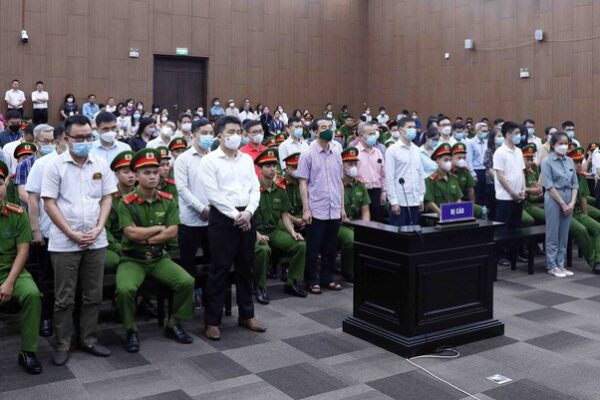
Plenty of blame to go around in Vietnam’s COVID repatriation flight bribery scandal
Following a two-week trial, a Hanoi court last month convicted 54 defendants, including senior diplomats, for collecting over $7.4 billion in bribes to arrange government flights home for Vietnamese citizens stranded overseas during COVID pandemic lockdowns. The COVID-19 repatriation flight scandal is not Vietnam’s largest corruption case in monetary terms, but it involved 25 officials from five different ministries, and the country’s tightly controlled state media were given relatively free rein to cover a case that captured public attention and affected many citizens. Nearly 200,000 Vietnamese are reported to have returned on some 1,000 Vietnamese government-organized charter flights from 62 countries during the 2020-21 peak of the pandemic. The scandal toppled three Vietnamese ambassadors and other diplomats for skimming from repatriation funds. In the July 28 sentencing of 54 people, four officials received life sentences, while 45 officials and businesspeople were jailed for between16 months and 20 years. Prosecutors had sought the death penalty for one official, but the courts held back. Of defendants, 21 were charged with receiving bribes, 24 for giving bribes, and the remainder for abuse of power, brokering bribes, or fraud. The 24 businessmen and women spoke in court about Vietnam’s “envelope culture”. Prosecutors described a “well-oiled” system put in place for companies that sought government contracts, with amounts correlated to the number of flights and repatriates. Tarnished diplomats There are six takeaways from the case that prosecutors said showed “extremely dangerous levels of corruption” that “betrayed the efforts of the whole country.” First, the Ministry of Foreign Affairs (MFA) is now tarnished in the eyes of the public. Thirteen of the 54 convicts – almost a quarter – were from the MFA, which prides itself on being a very small and elite institution. Vietnam’s diplomats are usually highly regarded. Yet the case displayed tawdry corruption, historically more common in other ministries. In a time of crisis, these diplomats preyed on common overseas workers whose remittances play a key role in supporting the home economy, and they did so in a crisis when people were desperate. The media were filled with stories of people who missed the deaths of parents and other cases of loss that resonated with the public. Four people in the embassy in Malaysia alone received 10 billion dong ($423,000) in bribes. Defendants [front row, standing] appear in court for the repatriation flight trial in Hanoi, Vietnam, July 11, 2023. Credit: Vietnam News Agency/AFP The scandal brought down a deputy foreign minister, To Anh Dung, who was found guilty of accepting 21.5 billion dong ($908,000), as well as ambassadors to Japan, Malaysia, and Angola, and the consul general in Osaka. In addition, the head of the consular affairs office, Nguyen Thi Huong Lan, received a life sentence for receiving 25 billion ($1.06 million). She refused to admit that they were bribes, but rather “thank you gifts” from companies that she took “out of respect.” Repayment brings clemency Second, the Supreme Court determined that repayment of three-fourths of the pilfered funds would make defendants eligible for a degree of clemency. For example, prosecutors had sought the death penalty for a secretary of a deputy minister of health, but upon repayment of the full 42 billion dong ($1.8 million), the court handed him a life sentence, saying “There is no need to remove from society.” While it’s important for the government to recoup the proceeds of crime and ensure that people do not benefit from corruption, the ruling also creates a sense that justice can be bought. Local media raised the question of whether filling state coffers was more important than punishing people who extorted bribes from citizens during the pandemic. Third, only three senior officials of Vietnam’s Ministry of Public Security were found guilty, a figure that looks inexplicably small given the ministry’s reach. MPS investigators were focused on Vu Anh Tuan, the former head of the immigration management department, and seemed keen to close ranks and redirect the investigations outward. Vietnamese nationals wearing protective suits are seen aboard a repatriation flight from Singapore to Vietnam, Aug. 7, 2020. Credit: Mai Nguyen/Reuters But one defendant received considerable media scrutiny. Hoang Van Hung was in charge of Department 5 of the MPS Investigation Security Agency, the office that was investigating the businesses that paid the bribes, tipping them off in return for his own illicit payments. Though caught on video receiving a briefcase that prosecutors alleged contained $450,000, the former MPS investigator was defiant, claiming that the attaché held four bottles of wine. He denied meeting anyone under investigation despite significant evidence. Prosecutors noted that given his position, he knew all the steps to take to cover his tracks, including relying on burner phones. His defiance throughout the trial reminded people that the people charged with investigating corruption tend to be tainted by it the most. His sentence was longer than prosecutors had asked for. Health ministry graft Fourth, the trial served up another reminder that corruption is endemic in the Vietnamese Ministry of Health. The secretary of a deputy minister of health, Pham Trung Kien, was caught taking some 253 separate bribes within a year. In addition to this scandal, the ministry was also rocked by the Viet A test kit scandal, and in a separate corruption case in July, a Ho Chi Minh City businessman was accused of selling $3.2 million in non-resistant latex gloves. The investigations into so many senior level ministry officials have had real impacts on the healthcare sector. So scared of being caught up in a corruption investigation, no one was willing to sign off on imports of key medicines, leaving serious shortages in early 2023 and causing the delays of thousands of surgeries. Healthcare workers spray disinfectant on Vietnamese nationals after their repatriation flight from Singapore landed at Can Tho airport, Vietnam, Aug. 7, 2020. Credit: Mai Nguyen/Reuters Fifth, Vietnamese analysts that I spoke to noted that there was a distinct difference in levels of contrition. The older figures who had been in the system for years…
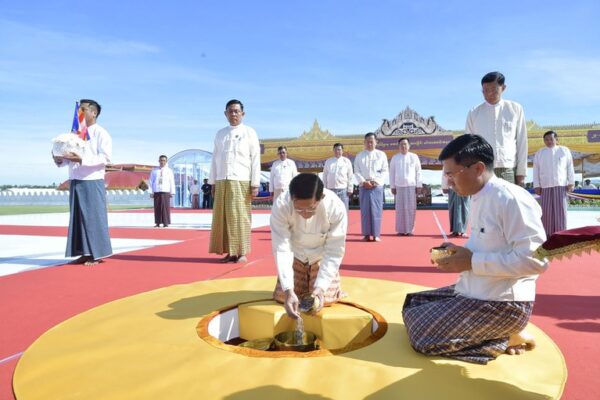
Huge Buddha statue a fig leaf for Myanmar junta atrocities, critics say
Myanmar’s junta inaugurated a 1,700-ton Buddha statue at a grand ceremony in the capital Tuesday that was secretly mocked by citizens used to the military’s efforts to win respectability through religion. The unveiling of the Maravijaya Buddha to mark the full moon day of Waso is the latest attempt by a military regime in Myanmar to present itself as being aligned with religion in the Buddhist-majority country, despite resorting to violence to enforce their grip on power. Civil servants had “no other choice but to go” to the ceremony, despite Waso being a holiday, said a resident of Naypyidaw who, like several others RFA Burmese contacted for this report, spoke on condition of anonymity, citing security concerns. “What I am sure of is that no civilians who aren’t government employees joined the ceremony,” he said. “Only [junta] employees who were forced to join went there. The military even arranged transportation for them.” Waso, also known as Dhammasetkya Day, commemorates the first sermon Buddha ever delivered, and Myanmar’s latest junta pulled out all the stops. The ordination ceremony in the capital Naypyidaw for the 63-foot-tall Buddha, which sits atop an 18-foot-tall throne, was the most extensive official religious event in the country since the military under Senior Gen. Min Aung Hlaing seized power two-and-a-half years ago. Pro-junta media have dubbed the 58 billion-kyat (US$27.6 million) carving “the world’s largest marble sitting Buddha statue,” ordered built by the junta chief to “show the international community that Buddhism is flourishing in Myanmar” and to “bring peace to the country and the world.” But residents of the capital were quick to point out the hypocrisy of the regime’s message of harmony when its security forces are responsible for the deaths of 3,861 civilians since the Feb. 1, 2021 coup d’etat. “What we see is that the junta is using a lot of money and manpower in building the statue to make it more famous than previous pagodas,” said another resident. “I have no plans to visit, as it was built by the blood-stained hands of the military dictator.” Other critics of the project have slammed the statue as a vanity project for Min Aung Hlaing, who they say hopes to paint himself as a protector of Buddhism in Myanmar. Rights activist Zaw Yan pointed out that the money used to build the statue was part of Myanmar’s national budget. He questioned why it wasn’t used to feed people who are starving because of the junta’s economic mismanagement or provide aid to the 2 million the United Nations Office for the Coordination of Humanitarian Affairs says have been displaced by conflict in the country since the takeover. “This is just the junta’s attempt to appear as if [Min Aung Hlaing] is a holy king in hope of gaining people’s support as a political exit,” he said. ‘Remembered as murderers’ Sai Kyi Zin Soe, a political analyst, told RFA that Min Aung Hlaing likely built the Maravijaya Buddha statue in a bid to whitewash his legacy, ward off danger and prolong his rule. “That’s what [junta chiefs] usually do,” he said. “There have been similar examples of this in the past.” The statue’s ordination was reminiscent of one in February 2002, when the country’s former junta under Senior Gen. Than Shwe held a ceremony to consecrate a 560-ton, 37-foot-tall marble Buddha statue known as the Loka Chantha Abhaya Labha Muni in Yangon. Than Shwe moved Myanmar’s capital from the city to Naypyidaw in 2006 and three years later built the Uppatasanti Pagoda there – its name invoking a Buddhist mantra believed to protect against foreign invasion. In 1986, former junta leader General Ne Win completed the Maha Wizaya Pagoda, whose name means “extraordinary success,” south of the revered Shwedagon Pagoda in Yangon. However, few people visit the pagoda these days because of its association with the dictator, whose regime was responsible for killing unarmed students, monks and other civilians in a bloody 1988 coup. Senior Gen. Min Aung Hlaing, center, head of the military council, puts jewelry at point of victory, auspicious ground, during consecration ceremony at the sitting Maravijaya Buddha statue made with marble rock, Sunday, July 23, 2023, in Naypyitaw, Myanmar. Credit: Military True News Information Team via AP In addition to the statue’s unveiling on Tuesday, the junta also announced an amnesty that reduced the prison term of the jailed head of the deposed National League for Democracy, Aung San Suu Kyi, by six years and that of the country’s ousted president, Win Myint, by four. It also ordered the release of thousands of inmates from prisons around the country. The junta often announces amnesties on Buddhist religious days. “Of course they want to be rulers who are seen to revere Buddhism … but they are remembered as murderers, not as devout religious leaders,” said Kyee Myint, a human rights lawyer. “[Try as they may] their wrongdoings will remain recorded in history.” Waryama, a leader of the Spring Revolution Sangha Network of anti-junta Buddhist monks, likened such acts to “hiding a dead elephant with the skin of a goat,” or attempts of deception. “Generations of tyrants and dictators in our country build these temples and pagodas to cover up their atrocities and killing of the people.,” he said. “[The junta] is using the Buddha’s image to try to continue its rule of the country so that it can inflict more cruelty … In fact, worshiping Buddha statues is just a superficial custom of Buddhism.” Buddhist in name only The statue unveiled on Tuesday, whose name Maravijaya means “the Buddha who overcomes the devil’s interference,” is imbued with Buddhist symbolism. According to the Institute for Strategy and Policy (ISP-Myanmar), an independent research group, worship of the Maravijaya statue involves the number nine, seen as auspicious by Myanmar’s superstitious military leaders. The combined weight of the statue (1,782 tons) and throne (3,510 tons) is 5,292 tons. When 5,292 is added together until one digit remains (5+2+9+2=18, 1+8=9), the result is nine. The same is…

Lao police detain Chinese rights lawyer who was headed to the United States
A Chinese human rights lawyer who lost his law license after speaking out about the cases of 12 Hong Kong activists has been arrested in Laos and could face deportation to China, the Associated Press reported. Lu Siwei was arrested in Vientiane Friday morning as he boarded a train for Thailand. He was traveling to Bangkok to board a flight to the United States to be with his wife and daughter, according to the AP. Lao police said that there was something wrong with his passport, according to Bob Fu, founder of Texas-based religious rights group ChinaAid. Lu sent a message at 10:10 a.m. on Friday saying that he had been detained by three policemen, according to his wife, Zhang Chunxiao. “I haven’t been able to get in touch with him again,” she told Radio Free Asia. “I feel that they will send him back as soon as possible.” Lu had been under surveillance in China since his attorney’s license was revoked in 2021, Zhang said. A camera was installed at the door of their house, and he had been barred from leaving China. ‘Long-arm jurisdiction’ The arrest in Laos was obviously due to the “long-arm jurisdiction” of Chinese authorities, who have been aggressively pursuing Chinese dissidents abroad, Fu said. Lu would face prison if returned to China. Fu said he was contacted by Lu’s family two weeks ago to help him leave China. Lu had valid visas for Laos and the United States, and two ChinaAid activists were traveling with him when he was arrested, the AP said. Fu sent the AP photos of Lu’s passport to verify his claims. He told RFA that Chinese authorities likely asked Lao police to focus on Lu’s passport during the interaction at the train station. He said he’s spoken with several U.S. State Department senior officials about the arrest. One of the two activists [left] traveling with Chinese rights lawyer Lu Siwei [right] argues with police who were in the process of detaining Lu, near the Thanaleng dry port, 13 kilometers (8 miles), south of Vientiane, on July 28, 2023. Credit: Anonymous source via AP “The State Department activated the emergency response mechanism and immediately notified the U.S. embassy in Laos and the diplomatic systems of other allied countries,” Fu said. China’s Foreign Ministry didn’t immediately respond to a request for comment from the AP on Friday. Numbers listed for Lao’s Foreign Ministry rang unanswered, and the Laotian embassy in Beijing didn’t immediately respond to emailed requests for comment, the AP said. Lawyer for detained activist Lu was hired by the family of Quinn Moon, one of 12 protesters who were jailed after trying to escape to democratic Taiwan by speedboat following the 2019 Hong Kong protest movement. He was particularly vocal in the months following their initial detention and repeatedly commented about his unsuccessful attempts to gain access to his client. After his law license was revoked in 2021, Lu told RFA that he couldn’t have predicted he would end up in this situation. “Sometimes it is difficult to imagine what your life will bring,” he said. “You can make some plans, but there are still some certain events that will change your life.” Edited by Matt Reed.
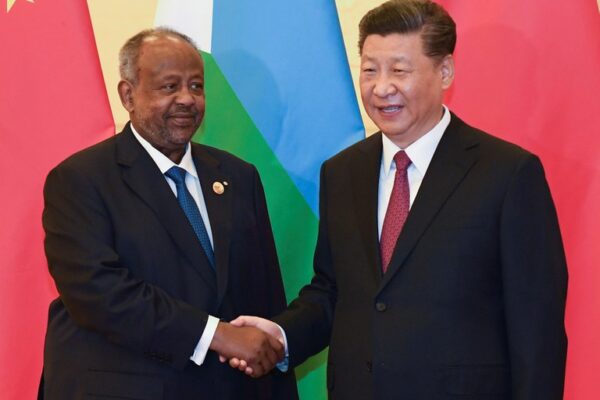
China is the tech abettor of global autocracy
Lost in recent news about China’s spy-base in Cuba was the fact that Huawei employees are working for the Latin American dictatorship. The Chinese telecoms giant isn’t just helping maintain an intelligence-gathering facility. It’s also helping Cuba oppress its own citizens. This is a common thread in Chinese diplomacy: Giving authoritarian regimes the technological tools they need to surveil, repress, and punish dissidents. Huawei, whose links with the Chinese Communist Party are well established, has been Cuba’s main technology provider for the state telecommunications company since 2017. According to a Swedish study, this is part of China’s support for “digital authoritarianism,” and Huawei’s eSight Internet management software that filters web searches is also in use across Latin America. When the Cuban people staged massive protests in July 2021, the government controlled and blocked the internet using technology “made, sold and installed” by China, according to Senator Marco Rubio. Then there’s Africa. In September 2018, Djibouti started surveillance system construction in collaboration with the state-owned China Railway Electrification Bureau Group. The video surveillance system covers major urban areas, airports, docks, and ports in the city of Djibouti. In Asia, China is reportedly cooperating with Myanmar’s military government in constructing a surveillance post on Great Coco Island. In December 2020, Myanmar applied 335 Huawei surveillance cameras in eight townships as part of its “Safe City” project. China’s President Xi Jinping shakes hands with Djibouti’s President Ismail Omar Guelleh before a meeting at the Great Hall of the People in Beijing, April 28, 2019. Credit: Madoka Ikegami/Pool via Reuters The cameras have facial recognition functions and alert authorities if surveilled persons are on a wanted list. In July 2022, Reuters reported that Myanmar’s military government installed Chinese-made cameras with facial recognition capabilities in cities across the country. The equipment was purchased from Dahua, Huawei, and Hikvision. In another case of close Chinese support for an authoritarian ruler in Southeast Asia, it was confirmed in February 2023, that China has a naval base in Ream, Cambodia. In June 2019, the Deputy Commissioner of the General Commissariat of the Kingdom of Cambodia Police and Chief of Phnom Penh Municipal Police visited Chinese companies including Huawei and Hikvision, expressing interest in China’s “Safe Cities” surveillance systems and other police equipment which he hoped to introduce for “improving public security and combating crimes.” In October 2022, according to Voice of America, Cambodian human rights activists suspected Cambodian local police of using drones and surveillance cameras supplied by Chinese companies to monitor labor rights protesters. Belt and Road Initiative In Pakistan, China has installed Chinese technology for domestic surveillance since at least 2016. That’s when the so-called “Safe City” project commenced operations in Islamabad, in collaboration with Huawei and other Chinese companies like e-Hualu. The project has established checkpoints and electronic police systems along major city thoroughfares, enabling citywide vehicle monitoring. In 2017, Huawei collaborated with the Punjab Safe Cities Authority in Pakistan to build a safe city system in Lahore. The project includes an integrated command and communication center, 200 police station sites, and 100 LTE base stations. In Central Asia, Huawei and Hualu surveillance systems are throughout Dushanbe, ostensibly to combat what local authorities say is “terrorism and extremism.” In May 2023, the head of Sughd Province Tajikistan met with Huawei representatives to discuss its 25 million USD “Safe City” project in Khujand, its provincial capital. A staff member sits in front of a screen displaying footage from surveillance cameras, at the Hikvision booth at Security China, the China International Exhibition on Public Safety and Security, in Beijing, June 7, 2023. Credit: Florence Lo/Reuters Much of China’s global provision of domestic surveillance tools is through its Belt and Road initiative, through which it has sent technology to Egypt and Nigeria, Uganda, Turkey, Russia, Ukraine, Azerbaijan, Angola, Laos, Kazakhstan, and Kenya. There’s also Serbia, where a political dissident claimed that the objective of the country’s participation in the Belt and Road Initiative is to “hunt… down political opponents.” Technology surveys show that around the world, at least 79 states have bought into Huawei’s surveillance package. They include liberal democracies like Italy, Netherlands, and Germany. A Huawei contract can thus signal entry-level affiliation with Xi Jinping’s New World Order, where “a future and destiny of every nation and every country are closely interconnected”—by invasive Chinese technology that abets oppression. That doesn’t belong in America’s backyard, in Cuba, or anywhere else in the world. Aaron Rhodes is senior fellow at Common Sense Society and President of the Forum for Religious Freedom-Europe. Cheryl Yu is senior researcher at Common Sense Society. The views expressed here are their own and do not reflect the position of RFA.
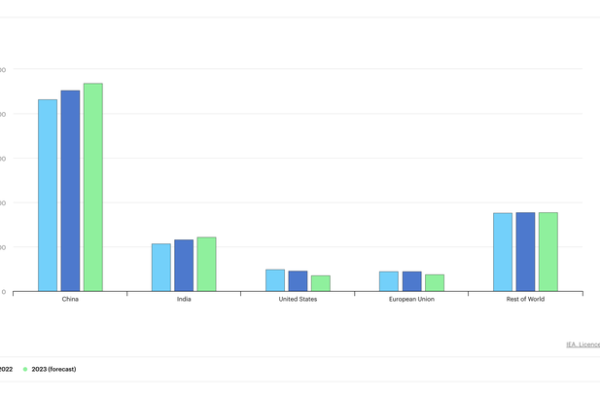
China’s coal use increased to a record high in 2022, IEA says
China’s coal consumption grew by 4.6% in 2022 to a new all-time high of 4.5 billion metric tons, dragging with it global coal demand offsetting declines in Europe and North America, a new report by an energy watchdog said. The coal market globally rose by 3.3% to hit a fresh new record of 8.3 billion metric tons in 2022, and will stay near that record level this year due to solid growth in Asia for both power generation and industrial applications, said the Paris-based organization International Energy Agency. Continued strong growth in Asian economies offset declines in Europe and North America, highlighting the need for more robust policies and investments to accelerate clean energy development, IEA said in their mid-year Coal Market Update, published on Thursday. Demand in China was higher than expected last year due to lower quality coal that resulted in higher-than-expected volumes, while more coal than expected was gasified to produce synthetic liquid fuels, plastics and fertilizers that increased the demand for non-power by 7%. Coal demand in Indonesia soared by about 36% to 201 million metric tons, making Indonesia the fifth largest coal consumer after China, India, the United States, and Russia. The IEA said 10,440 terawatt hours were generated from coal in 2022, which accounts for 36% of the global electricity generation. Coal, being a fossil fuel, exerts a significant toll on the environment. Environmental organization Greenpeace has labeled it “the most environmentally harmful and polluting method of energy production.” “Coal is the largest single source of carbon emissions from the energy sector, and in Europe and the United States, the growth of clean energy has put coal use into structural decline,” said Keisuke Sadamori, IEA’s director of energy markets and security. “But demand remains stubbornly high in Asia, even as many of those economies have significantly ramped up renewable energy sources. We need greater policy efforts and investments – backed by stronger international cooperation – to drive a massive surge in clean energy and energy efficiency to reduce coal demand in economies where energy needs are growing fast.” Coal consumption will grow in 2023 China is the world leader in renewable energy, but it also continues to devour coal, mainly to continue with its economic growth trajectory and tackle power failures due to heat waves and drought. In 2023, global coal demand is estimated to have grown by about 1.5% in the first half to about 4.7 billion metric tons. It was mainly due to the two largest consumers, China and India, growing by over 5%, more than offsetting declines elsewhere. Global coal consumption, 2021-2023. Credit: AFP IEA projected China, India and Southeast Asian countries together are expected to account for 3 out of every four metric tons of coal consumed worldwide. “In total, we expect China’s coal demand in 2023 to grow by about 3.5% to 4.6 billion metric tons, with demand from the power sector up 4.5% and demand from non-power uses growing by 2%,” the report said. China and India account for two-thirds of global coal consumption, which means they use twice as much coal as the rest of the world combined. In 2023, the duo could account for nearly 70% of the world’s global coal consumption, while the United States and the European Union could account for just 10%, IEA said. Meanwhile, on the production side, the three largest coal producers – China, India and Indonesia – all produced record amounts in 2022. IEA said China and India set new monthly records in March this year, with China surpassing 400 million metric tons for the second time ever and India surpassing 100 million metric tons for the first time. That month, IEA said that Indonesia exported almost 50 million metric tons, a volume never shipped by any country before. Edited by Joshua Lipes.

